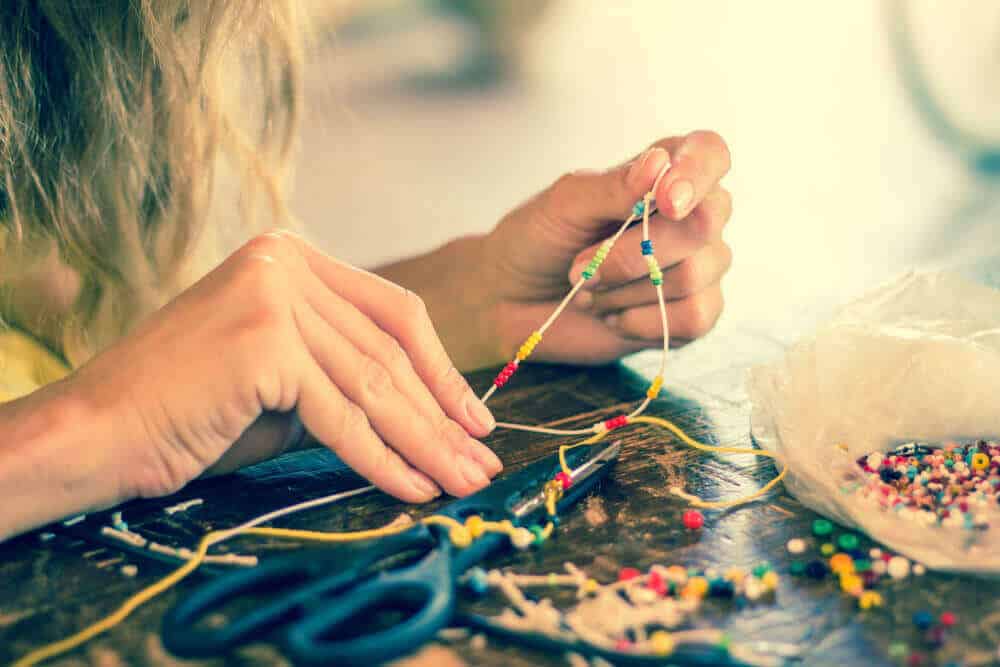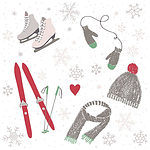There are machine sewing hobbies and hand sewing hobbies. Hand sewing leisure activities include quilting, and yes, you can do quilting with a machine, but many prefer the coffee clutch style of visiting and stitching quilts by hand. Exploring these leisure pursuits will give you the knowledge that there are many hand sewing hobbies for beginners that can be both creative and practical and enhance your leisure time and quality of life.
What is Hand Sewing?
Hand sewing involves stitching fabric by hand using a needle and thread. It’s a skill that has been used for centuries to make clothing, quilts, and other textile items. You can sew with various stitches, including straight, running, whip, and more. It’s also possible to sew embellishments onto fabric using hand sewing techniques.
Why Try Hand Sewing?
There are many reasons to try hand sewing, even if you already know how to use a sewing machine. Hand sewing is meditative and a way to relax and unwind after a long day. It’s also a portable sewing method you can take anywhere. Learning the basics of hand sewing and trying plenty of simple sewing projects you can make by hand is easy. Then, once you’ve mastered the basic skills, you can move on to more challenging sewing projects.
Why Are Hand Sewing Hobbies Becoming So Popular?
Hand sewing is a relaxing and enjoyable hobby for people of all ages. It’s also great for creating unique gifts or home decor items while socializing with others.
Other benefits include:
- It’s a calming and therapeutic activity that can help reduce stress levels.
- Hand-sewn items often have a more personal touch than those made with a machine.
- Upcycle fabric scraps or old clothing into new and unique items.
- Hand sewing is relatively easy to learn and doesn’t require a lot of expensive equipment.
- It improves eye-hand coordination and strengthens your attention span.
- If you’re considering taking up hand sewing, plenty of online resources and tutorials are available to get you started. You can also find sewing groups and forums where you can chat with other sewers and get advice and tips.
- Save money by making gifts or home decor items.
What Do You Need To Start Hand Sewing?
To start hand sewing, you will need a few basic supplies:
- A needle: You will use a needle of some size, depending on what you want to create.
- Fabric: Some hand-sewn leisure activities only require material you already have while others, such as cross stitch, require Aida cloth.
- Thread: You’ll need a thread the same colour as your fabric or section of the pattern you are creating. Choosing a strong thread to hold the material together is also essential.
- Scissors: Hand sewing requires sharp scissors that can easily cut through fabric.
- A thimble: A thimble is a small metal cap that fits over your finger. It will help protect your finger from being poked by the needle and is also helpful for pushing the needle through thick fabric.
- A seam ripper: A seam ripper is a necessary inexpensive sewing implement that removes stitches made by mistake.
Why People Say Hand Sewing Is the New Yoga
There are many similarities between sewing and yoga. Sewing and yoga require concentration, which helps you clear your mind and focus on the present moment. The action of stitching fabric is calming and therapeutic and is a great way to relieve stress, just as yoga is.
Yoga and sewing can be a solo activity or something you do with friends. There are plenty of online sewing groups and forums where you can chat with other sewers; this is true of yoga as well.
Sewing and yoga are both excellent ways to express yourself. Hand sewing allows you to be creative and express yourself through your stitches, or you can also personalize items by adding your unique embellishments.
Different Types Of Hand Sewing Hobbies
There are many types of hand sewing hobbies, from quilting to embroidery. Here is a list of 19 hand sewing hobbies for you to consider participating in and researching further to see if this leisure pursuit will be proper for you.
| Applique | Crocheting | Knitting | Quilting |
| Beading | Cross Stitch | Lace Making | Tablet Weaving |
| Bobin Lace | Embroidery | Latch Hooking | Tating |
| Bunka | Felting | Macrame | Weaving |
| Crewelwork | Finger Weaving | Petite Point |
Quilting
Quilting is the process of sewing two or more layers of fabric together with a layer of batting in between. The batting provides warmth and padding, making quilts ideal for use as bedspreads, throws, or lap blankets. Quilting is also great for fabric scraps from other sewing projects or clothes that no longer fit.
Embroidery
Another beginner-friendly sewing hobby is embroidery. Embroidery is the process of sewing designs onto fabric using a needle and thread, which can personalize clothing, add decoration to home decor items, or make unique gifts. Embrodiery can be done on a machine however there are some embroidery styles that a machine can not do, such as cross stitching on Aida cloth.
A petite point embroidery is a delicate form of needlework in which you create stitches using tiny needles and thread. Petite point requires excellent attention to detail and is often used to create intricate designs on garments, linens, or other fabric items.
Crewelwork is a type of embroidery that uses wool yarn to create designs on fabric that has once again gained popularity in recent years. Then there is monogramming, where an object, such as a shirt, has a design embroidered onto it. An example would be your initials on a handkerchief, towel or clothing.
Bunka needlework is a type of embroidery that originated in Japan. It uses a special needle with a blunt tip to create intricate silk or linen fabric designs. The designs are nature-inspired, and the stitches are worked in a spiral pattern creating a sense of movement.
Cross-stitch is also popular embroidery in which tiny “X” shaped stitches create a picture or design. You can cross-stitch on any fabric, but the most popular choice is Aida cloth. Aida has small holes spaced evenly across its surface, making it easy to count stitches and produce even results. There is also a mesh plastic canvas you can cross-stitch on as well. To cross stitch, you stitch an “X” shape over intersections of fabric threads. Cross-stitching creates beautiful artwork or pillows, or Christmas decorations.
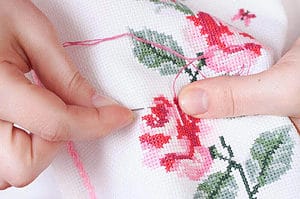
Macrame
Macrame is a series of knots to create wall hangings, plant hangers, and other decorative items rather than weaving or knitting. The knots are made with an even number of cord strands and are often symmetrical. You can use macrame to create a variety of textiles, including wallhangings, plant hangers, and even jewelry.
Crocheting
When crocheting, you create fabric by interlocking loops of yarn, thread, or other material using a crochet hook. The word comes from the French term crochet, meaning “small hook.” The crochet hook is typically made of metal, wood, bamboo, or plastic and comes in various sizes. The larger the needle, the larger the interlocking loops of yarn.
Crochet can be worked in many stitch patterns to create various fabric textures and designs. The most common stitches are single crochet, half double crochet, double crochet, and treble (or triple) crochet. Other commonly used stitches include the slip stitch, chain stitch, and Moss stitch. Crochet can also be worked in rounds to create spiral designs such as hats, afghans, and doilies.
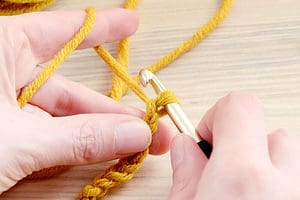
Beading
Beading is the process of stringing decorative beads onto a thread or wire to create jewelry or other ornamental items. Beads are made from various materials, including glass, metal, wood, and plastic. You can use many techniques while beading and the type of beads and materials used will often dictate the method employed.
The peyote stitch is the most common technique when making bead jewelry which involves threading beads onto a length of string and then passing the needle through each bead in turn. Next, the beads are tightened against each other to sit securely. Beading is a great way to make jewelry, ornaments, and other decorative items.
Knitting
Using two needles, interlocking loops of yarn or thread form a fabric; this is knitting. You can knit various things, such as clothing, blankets, scarves or slippers.
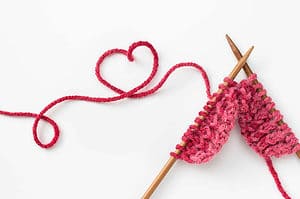
Weaving
You are weaving when two or more threads are interlaced at a right angle. The thread can be any material, including metal, plastic, cotton or wool. Examples are finger weaving and tablet weaving.
Finger weaving is a type of weaving that uses the fingers instead of a loom. The yarn is wound around the fingers and then woven through itself to create a fabric. By finger weaving, you can create belts, straps, sashes, or friendship bracelets.
Tablet weaving is a type of weaving which utilizes small cards or tablets, usually four at a time, to create a woven fabric. Therefore, it is also sometimes called card weaving.
Tablet weaving has been around for centuries and was used to make narrow bands of fabric for trim or decoration on clothing or other items. Today, tablet weaving is still a part of our world, adding texture and interest to projects, but now it is common to make wider fabrics for use in clothing, bags, and other items.
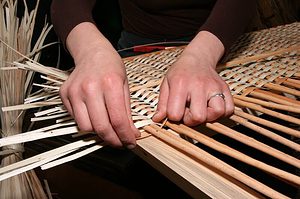
Applique
Applique is a decorative needlework hobby in which patterns are applied to fabric using a needle and thread made from cotton, wool, silk, yarn or ribbon. As appliques add a pop of colour or pattern to an otherwise plain garment or fabric, you can embellish clothing, household linens, quilts, and other textile items.
Felting
Felting involves using warm water and soap to wet and agitated material fibres until they start to mat together. Then, a felting needle with barbed shafts catches the matted fibres and pulls them together as they are stabbed into your fabric canvas. Once the fibres are tightly bound, they will not come apart easily, and the fabric will have a felted appearance. Felting is used to make various items, including clothing, hats, and blankets.
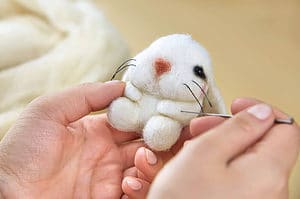
Lace making
Lace-making by hand is a delicate and intricate process used for centuries to create beautiful and unique pieces of fabric. Lace makers use various techniques to create their designs, and the results can be stunning.
One of the most common methods of lace making is known as needlelace. You use a needle and thread to create small stitches in a piece of fabric, and then the stitch pattern is followed by another row of stitches, creating a lattice-like effect.
Bobbin lace is another popular method of hand lace making. You wind the thread around a bobbin, and the resulting fabric is stitched together, creating intricate designs and stunning results.
Tating is a third method of lace making that uses a shuttle to create stitches. The shuttle passes through the fabric, and the thread is wound around it to make delicate and intricate designs.
Latch Hooking
Latch hooking is a great way to make rugs, blankets, and other items using a latch hook needle, to create loops in the fabric. The loops are then pulled through a backing material to create a design.
The material used for latch hooking is called a canvas, and it is available in different sizes and textures, depending on the project you are working on. The size of the canvas will determine the size of the finished product.
Latch hooking with wool or synthetic yarn is the most common method, but you can also use other materials such as strips of fabric or ribbon. The possibilities for design are endless, and the finished product can be a wall hanging, rug, pillow, or anything else you can imagine.
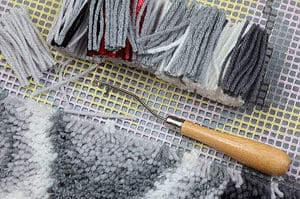
How To Get Started With 8 Simple Tips And Tricks
If you are unsure which hand sewing hobby is for you, then take some more time to look at the types that piqued your interest. Invest in your leisure lifestyle by considering the leisure pursuit best for you by:
- Start by researching various hand sewing styles and choose the kind of hand sewing that interests you the most. You can begin your research by watching a friend or family member or by checking out the topic on the internet, Pinterest, Hobby Magazines, Library, Hobby Stores, Craft Fairs, and YouTube.
- Look at the process of each style, the time involved, and the cost.
- Consider your abilities. If you find it difficult to see in low light, then a hand sewing hobby that is intricate such as petite point, may not be for you without some adaptation, such as purchasing a bright light. If your hand and fingers have limited mobility, then you may need to utilize larger needles for crocheting to be successful.
- Start with simple projects, then work your way up to more complex ones to see if the hand sewing style you chose brings you the joy you thought it first would.
- Consider the cost of the style of hand sewing you want to try, as some cost more than others. Quilting, for example, can begin with utilized material from clothes you no longer wear so that the price will be less than purchasing materials from a fabric store.
10 Ideas Of What To Create With Your Hand Sewing Project
There are many different hand sewing projects that you can do for yourself to add a personal touch to clothing, blankets, and other household items, or you can share your talents to make other people happy.
1. Sew a quilt for someone who is going through a tough time
2. Make a doll or baby clothes.
3. Sew a teddy bear.
4. Make a blanket or quilt.
5. Hand sew a pillow or a pet toy.
6. Hand sew items for someone in need or the hospital.
7. Create curtains, tablecloths, towels or furniture runners.
8. Fancy up some cloth napkins, aprons, pot holders or tote bags.
9. Keep warm, creating hats, scarves, mittens, or slippers.
10. Design a belt or bookmark
Final Thoughts
Hand sewing can be both therapeutic and enjoyable. Yes, hand sewing is a slower process than machine sewing, so take your time and enjoy the process of creating beautiful things. In addition, there is an intrinsic reward in creating something from scratch and the knowledge of that item being a legacy to other generations.

